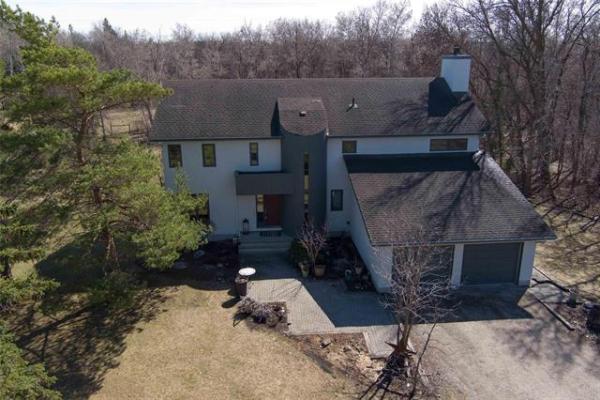Question: Our kitchen peninsula tile countertop has been pulling away from an exterior wall progressively for the 20 years since we’ve owned the home. I need to find out why.
We have a two-story home built in 1989. It’s on a slab. We have re-caulked the gap several times over the years. The countertop has an overhang of 13-inches and the gap widens to 1/4-inch as it gets to the edge of the overhang. The cabinets below are not pulling away from the wall. The movement may have slowed down a bit, but there is still a small crack in the caulking, which was replaced three years ago.
I want to update the countertop but need to resolve the problem first.
Thank you, Mrs. John Prohs.
Answer: Movement in certain building materials or fixtures is quite normal and may be due to several factors. The key to preventing a larger issue is keeping up with normal maintenance or small repairs.
It is quite often that I see evidence of cabinets or countertops that are no longer in the exact position as originally installed. There may be one or more causes of this relocation and we will discuss these and possible solutions. But the overriding solution to this issue is keeping up with regular maintenance, or small adjustments, which may completely or partially negate any further problems.
In newer homes I often see a small gap at the backsplash of the kitchen countertop. This may be in any location and I always recommend installation or replacement of the silicone caulking to cover the space to prevent moisture intrusion from the faucet. The counter may never have been caulked, which is often the case with tile counters and backsplashes, which only have grout filling the space along the wall. Tile contractors often leave out the flexible caulking to allow the grout to set, which can lead to small cracks or shrinkage. After several months, this inside corner should be covered with a good bead of colour coordinated silicone caulking. This very flexible sealant should bridge any small gaps, while maintaining its elasticity for several years.
Since your gap is likely larger than what is typically filled with normal caulking, additional steps may be required before completing that task. The first thing to try and ascertain is whether the variable movement is due to the cabinets moving or some other components in the area. Since you have stated that the cabinets have not pulled away from the wall, this may be the first area to verify. Looking under the counter, after removing stored items, should alert you to any imperfections. Since most modern cabinets are modular, they are typically secured to the wall behind with wood screws fastened through a nailing strip at the back, just under the counter. If the fasteners have become loose, or the nailing strip damaged or relocated, then re-securing the cabinets to the wall may solve future movement issues. Contrary to your thinking, this may not be visible as cabinet movement from the outside and may only be properly identified by looking underneath and re-securing the screws with a cordless drill.
Because kitchen cabinets are comprised of wood-based products there is always the possibility of shrinkage or warping of the cabinet components. Since the doors are secured to the sides or gables of the cabinets, and shelving inside is also supported on these components, there is the possibility of movement. It may be as simple as overloading the shelving or drawers, which may move slightly when the heavy contents are moved. Again, this may be cured by re-fastening the cabinets to the walls or adding additional supports.
One area that is often overlooked in thinking about cabinet movement is the floor below the cabinets. Since they are normally well secured to the studs in the wall behind, the surface that they sit on top of may be neglected. To prevent bowing, twisting, or sagging of the cabinets, the bottoms should be properly supported on the floor below, as well. This is typically done by driving small wooden shims underneath the cabinet sides at the same time as the backs are secured to the wall. These shims can slip or move over time and may no longer be properly supporting the base cabinets. This can also be caused by seasonal movement in the footings below the teleposts, which support the beams, which support the floor joists, which support the floor sheathing that that the cabinets sit upon. In new homes this may also be due to shrinkage of the joists or beams, which is normally only seen in the first few years.
The way to diagnose these later issues is to inspect the entire cabinet system with a good level and tape measure. Check to see if the individual cabinets are still plumb and level and from corner to corner with the tape to ensure they are square. If either of these parameters are substantially off, further repairs are required. These may include driving additional shims under the cabinets at various points. In more extreme cases, fasteners holding the individual modules together may have to be removed and reinstalled once the units are plumb and square. These final repairs can certainly wait until it is time to install the new counter, which should be more easily accomplished immediately after removing the old tile top.
Periodically installing new silicone sealant to fill the small gap between your kitchen countertop and wall may be enough to minimize problems due to typical seasonal movement. If more movement is seen, further securing or repairs to the cabinets may be required before installing a new top.
Ari Marantz is the owner of Trained Eye Home Inspection Ltd. and the past president of the Canadian Association of Home & Property Inspectors — Manitoba (cahpi.mb.ca). Questions can be emailed to the address below. Ari can be reached at 204-291-5358 or check out his website at trainedeye.ca.
trainedeye@iname.com



